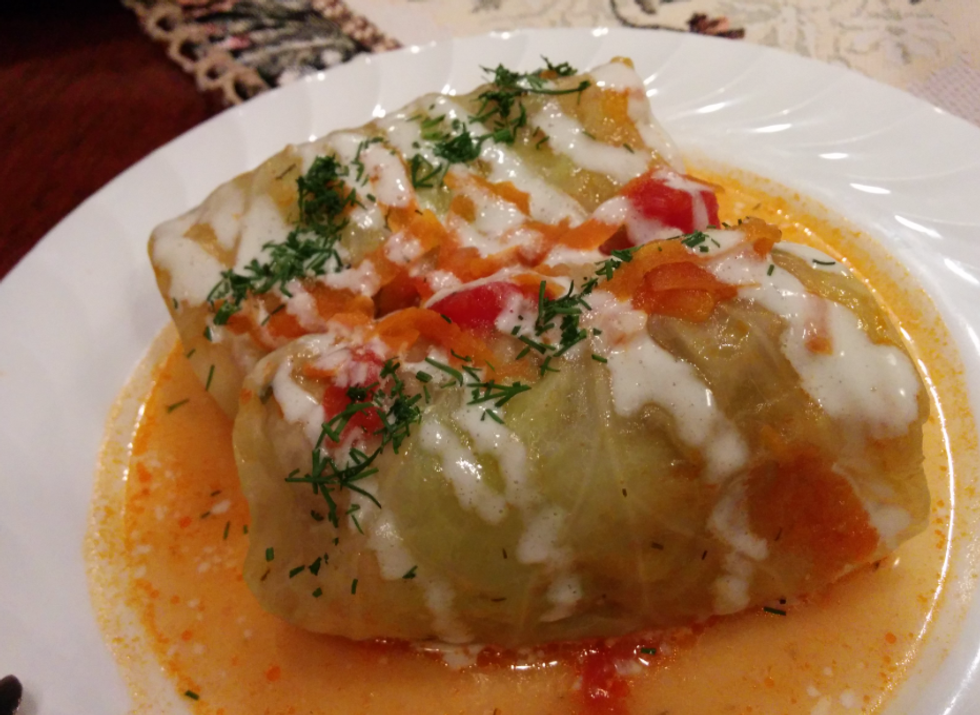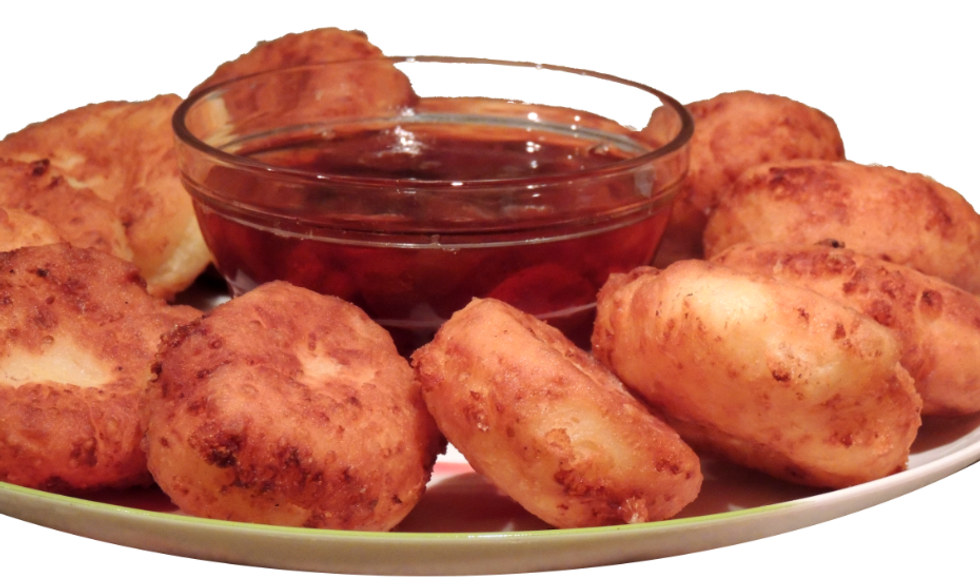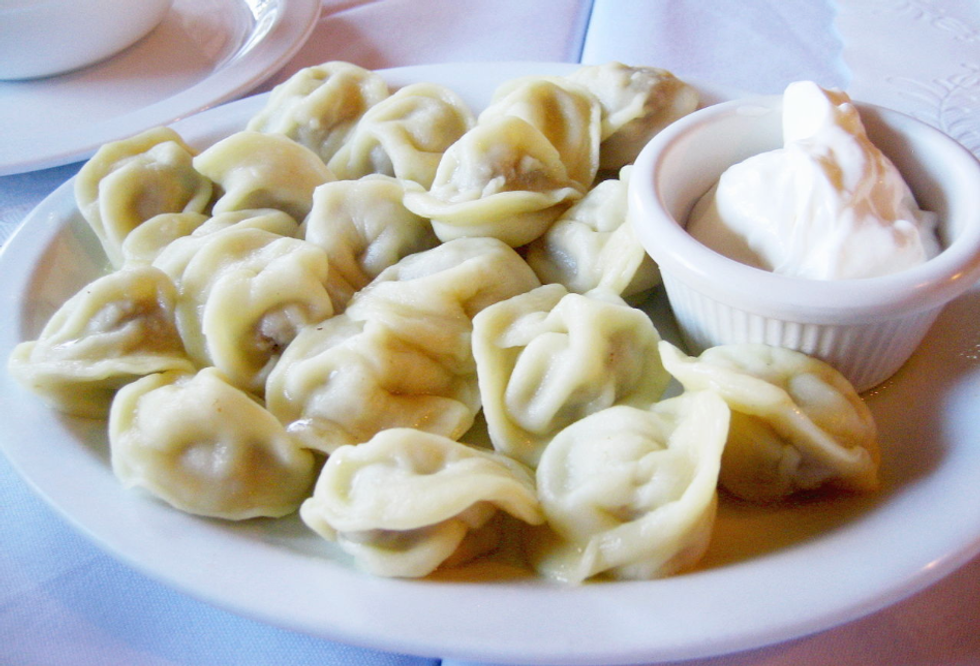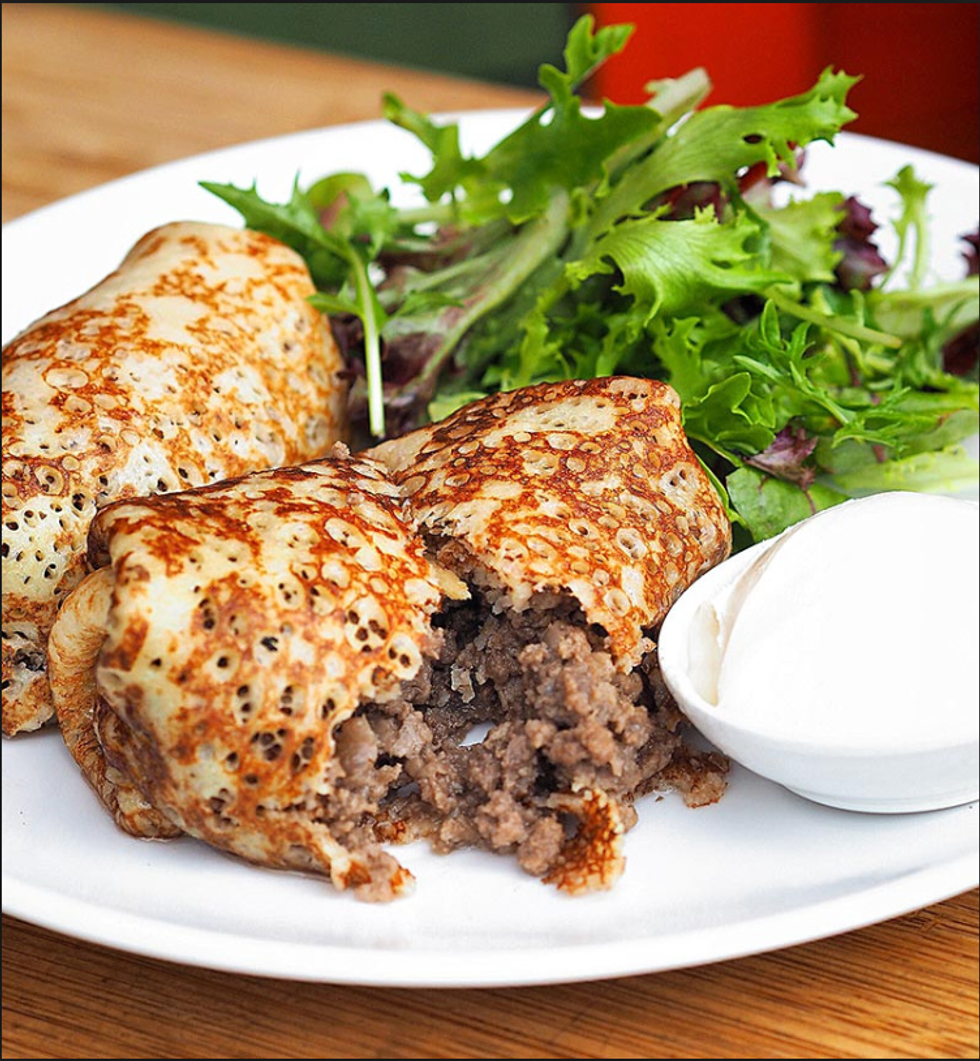When thinking about Russian food what comes to mind? A generous shot of vodka and some caviar? Beet soup with a dollop of sour cream? Those are all delicious but they're only a sample of what Russian cuisine has to offer. Russia is home to a variety of delicious dishes you might have not yet explored. The biggest country in the world, extending over Asia and Europe, Russia has a diverse set of culinary influences. These include: Western and Central European, Central Asian and even Middle Eastern, making Russian food rich with a variety flavors. Here are some of my favorite dishes.
1. Golubsti
These are cabbage rolls, usually stuffed with ground pork or beef and rice or buckwheat. They are stewed in a broth of sour cream and tomato sauce. Light and fresh, Goloubsti are eaten a casual lunch or dinner. The ‘Goloub’ in ‘Goloubsti’ means pigeon in Russian. In the 18th and 19th centuries French cooking influenced Russian cuisine. Russian nobles either employed French chefs or sent their serfs to train in culinary arts under French chefs in St. Petersburg or Moscow. The popularity of pigeon in French cuisine crossed over to Russia and resulted in a dish of grilled pigeon wrapped in cabbage leaves. Later the cabbage was stuffed with ground beef or pork instead, but ‘Goloub’(pigeon) the remained in the dishes’ name.
2. Syrniki
The 'Syr' in 'Syrniki' means cheese in Russian. They are a type of Russian pancake made with quark or curd/cottage cheese. Syringe are fried in vegetable oil, have a crispy dark brown outer layer and are creamy on the inside. Popular garnishes are jam, honey, sour cream and apple sauce. Traditionally they were the food of rich as curd was reserved for the wealthiest.
3. Pelmeni
In the United States and Canada the term peirogi is often used to describe a wide variety of Eastern European dumplings, including the Ukrainian Vareniki and the polish peirogi, which can be sweet or savory. Pelmeni, however, are strictly savory. They are dumplings made with thin dough and stuffed with minced meat; either pork, lamb or beef. Diced onion, garlic and black pepper are often mixed in with the meat for flavor. They originate from the Udmurt and Perm regions to the west of Russia. The name Pelmeni means ‘ear bread’ in the Komi and Udmurt languages native to these regions as they resemble ears. The traditional Udmurt recipe requires a mixture of beef, mutton, and pork. Originally eaten by hunters on the go, these dumplings are a simple and hearty food made in large batches. They are often frozen and boiled when needed for quick meal and are the most popular meal in Russia!
4. Pirozhki
Pirozhki in Russian means ‘little pies’. They are baked or fried buns made with yeast dough and come with several sweet and savory fillings. These include: minced beef, stewed cabbage, rice, mushrooms, apples, jam, cottage cheese and chopped lemon with sugar. They are great with for breakfast and with afternoon tea.
5. Blini
Blini are Russian pancakes. Unlike American pancakes they are very thin and more closely resemble the french crêpe. Blini are a Russian staple and there are countless recipes, both sweet and savory. Some popular fillings include sour cream and caviar, raspberry jam, minced meat with fried onions, sweet condensed milk, honey and cottage cheese. Most traditionally they are made using yeast, buckwheat flower, milk and eggs. Blini are eaten as a sweet snack with tea or can be a filling main meal. This dish has its origins in a slavic pre-christian sun festival called ‘Maslenitsa’(meaning butter week) where the blini symbolized the sun. This festival celebrated the end of the winter and the coming of summer and has been adopted by the Orthodox Church. It still is celebrated during the last week before the Great Lent.
6. Pryaniki
These are chewy Russian honey spiced ginger bread cookies, famously made in the industrial city of Tula, south of off Moscow.They differ greatly in flavor from European and American gingerbread cookies. Pryaniki are made from rye flour and honey, seasoned with spices like cinnamon, nutmeg, cardamon, cumin, or anise. These cookies are a delicious sugary snack and are frequently present at Russian afternoon tea.
























